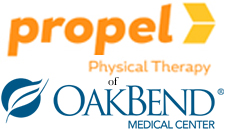Pain at the front of the knee, especially with jumping, running, and squatting is commonly diagnosed as patellar tendinitis, which translates to inflammation of the patellar tendon. Usually, this pain has persisted for some time, and what we have learned over recent years is the tendon is not actually inflamed…painful, but not inflamed…and now referred to as patellar tendinopathy. This condition commonly occurs in sports such as running, basketball, and volleyball to name a few.
The first step to treat this condition is to decrease training intensity and volume as this has been shown to be the biggest risk factor for patellar tendinopathy. Other factors include: decreased flexibility in the quadricep and hamstring muscles, a more vertical (stiff-leg) landing pattern, low arch height (pronation), decreased ankle dorsiflexion (Rudavsky & Cook, 2014), decreased hip internal rotation range of motion and decreased hip external rotation strength (Mendonca et al, 2018).
A common treatment approach is to utilize eccentric exercises. Eccentric exercise focuses on the lowering phase, like standing on one leg and lowering down to a chair, but not using that leg to stand back up. Some research has shown this type of treatment to be effective over a 12 week period. The problem with the eccentric program for patellar tendinopathy is that pain is often increased and the majority of people will not complete the program.
Another method is to do isometric exercise, which means the muscle contracts but there is no movement. Isometrics have been shown to decrease pain in the patellar tendon (Rio et al., 2015). This is a great way to self-manage your symptoms before moving on to the next phases of rehab.
Here are some tips:
- Carefully monitor and alter load until the tendon settles within 24 hours of activity.
- Keep pain level below 5/10 during the exercises and the pain has to settle within 24 hours.
- 5 reps x 45 sec hold at 70% of your maximum contraction and 2 minutes rest between sets
- Best at 30-60 degrees of knee flexion (not straight and not bent 90*).
- Can be performed on a leg press.
- You should notice reduction in pain after treatment.
Here is a short video on one possible way to perform an isometric quadriceps exercise at home:

